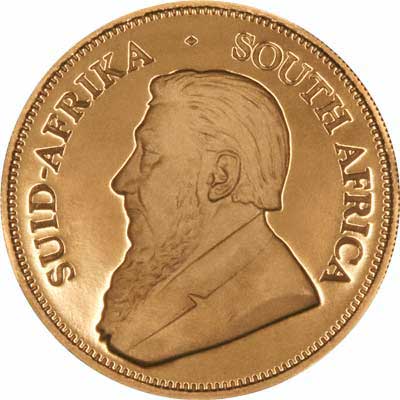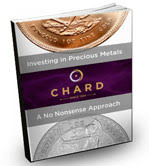News & Press Comments About Gold Sovereigns
Newspaper and media comments, and press releases mentioning gold sovereigns, together with our opinions.
Why You Should Buy British Gold Sovereigns
Aug 14th 2008. Written by Mark O'Byrne, Executive Director of Gold and Silver Investments Limited
Why you should buy British gold sovereigns
Gold bullion remains an essential diversification and essential financial insurance to have in all properly diversified portfolios. Besides the ever more important factors of inflation hedging and financial insurance, we believe that gold is likely to continue to outperform other asset classes and to provide significant returns to gold buyers, and eventually surpass its inflation adjusted 1980 high of $2,400/oz in the coming years.
In fact, Citigroup's former head of technical research and managing director of Yamada Technical Research Advisors LLC., Louise Yamada sees gold on its way to $3,000 within a decade. "Gold is the purest play against the dollar," said Louise Yamada, Yamada is highly respected and was voted Wall Street's best technical analyst from 2001 to 2004.
Credit Agricole's (France's largest bank and the fourth largest bank in the world) brokerage, Cheuvreux, see the possibility of a rise to $2,000/oz or higher.
So, how should one invest in gold?
There are many different ways to invest in gold and one's motivation for buying gold should dictate how one buys gold. Are you a speculator, investor or saver? Are you buying to make a capital gain or as a hedge against systemic risk and using your gold as financial insurance? Is your motivation a little of each?
ETFs, mining funds, digital gold, Perth Mint certificates, gold bullion coins and bars in one's possession and or semi numismatic gold coins are good ways to buy gold.
Given the extent of current macroeconomic and systemic risk a diversified precious metals holding makes sense and it should not be a question of "either or", rather a combination of these various ways.
Having eggs in various gold baskets, so to speak, is the most sensible and prudent strategy.
As part of this mix, older gold coins should be looked at. Classic European and world gold coinage is an often overlooked but extremely important sector in today's gold market. Pre 1933 and 19th century European and world gold coins are an intelligent alternative to modern gold bullion coins or bars, as there is often more room for appreciation because of their rarity - and yet, they can often be bought at bullion prices.
What is important, from an investment point of view, is the fact that gold bullion and older gold coins are not subject to VAT, due to the EU Gold Directive. Even more important is the fact that, unlike the other forms of gold investment outlined above, British gold sovereigns are also not subject to capital gains tax (CGT). Thus all post-1837 British gold sovereigns � because they are legal tender and have a legal tender face value - are capital gains tax free, which is obviously a massive benefit to investors vis-�-vis other gold investments.
The prices of these beautiful coins are only slightly higher than modern gold bullion, but they offer many advantages. Besides not having to pay CGT, other advantages include increasing scarcity, aesthetic value and historical significance. European and British gold coins are recognised by sophisticated investors as one of the most advantageous ways to invest in 'bulk' gold.
European, American and world gold coins are bought by both collectors and investors at a small premium to the price of bullion coins. Perhaps the most popular semi-numismatic gold coins internationally are British gold sovereigns.
The British sovereign (originally the one pound coin) is the most widely traded semi-numismatic gold coin in the world.
There is constant and excellent liquidity in most countries in the world. For the investor looking for slight leverage to the gold price with the potential for the premium (numismatic value) to rise, British sovereigns are a good way to invest in gold.
History of the British gold sovereign � from Henry VII to James Bond
The first British gold sovereigns were minted more than 500 years ago. They were minted under Tudor King Henry VII in 1489. The coin got its name from that first mintage which depicts the monarch seated majestically on the throne facing outward.
Sovereigns were then struck for Henry VIII from 1509. Henry VIII needed to raise revenue as he was engaged in George Bush-style overspending which led to a flow of gold and silver to Europe (equivalent of dollars to Russia, OPEC nations and China today).
Thus he was responsible for debasing and devaluing English money when he reduced the precious metal content from 23 carat to 22 carat to 20 carat (96% to 91.6% to 83.33%). Silver coins were debased even more and by 1551 silver coins had been reduced to 25% of their face value in what became known as the 'Great Debasement'.
The current design type with St. George slaying a dragon on the reverse and the monarch on the front was introduced nearly 200 years ago in 1816 under George III. The sovereign was minted almost continuously from that date until 1932 when Britain went off the gold standard.
British sovereign 'kings' minted during the reigns of Edward VII and George V are probably the most widely owned and recognised pre-1933 gold coins.
In 1816 the British gold sovereign as we know it today was first introduced, and as the British Empire expanded under Queen Victoria during the 1800s, this coin came to be the world's most widely distributed gold coin. Minted originally in London, the sovereign came to be minted all over the world as Australia and South Africa came to be large gold producers. Mints in Pretoria, Bombay, Ottawa, Melbourne, Sydney and Perth minted thousands of sovereigns during the late 1800s and early 1900s.
The design of Saint George aboard his brave steed, slaying the dragon, is common to the reverse of all variations of the coin. Saint George, who is believed to have lived from 275 to 303 AD, was a soldier of the Roman Empire from Anatolia, now modern-day Turkey. He was venerated as an Islamic and Christian martyr.
George was immortalised in the tale of George and the dragon in a collection of hagiographies and lives of the saints known as The Golden Legend, or Legenda Aurea. He is the patron saint of Canada, Catalonia, England, Ethiopia, Georgia, Greece, Montenegro, Portugal and Serbia, as well as a wide range of professions and organisations. This gives gold sovereigns an international appeal not enjoyed by many coins.
When coins were sent to places such as the United States for international payments between governments, they were frequently melted down into gold bars because of the federal regulations then in force. When gold coins were finally withdrawn from circulation in 1933 in the US, many thousands of British gold sovereigns were consigned to the melting pot.
Gold sovereigns were accepted as money and as payment throughout the world at the height of the British Empire and indeed this international currency may have helped create and strengthen the empire.
More recently, many armies around the world (including the US Army) gave their servicemen an emergency supply of gold sovereigns. They are still recognised in most parts of the world and, unlike paper dollars, will not be damaged by shredding, water or intense heat.
This is why Q gives James Bond 50 gold sovereigns in From Russia with Love. Near the beginning of the movie, Q gives Bond a special black briefcase. Hidden in the case are 40 rounds of ammunition; a flat throwing knife; an AR-7 folding sniper's rifle; and, embedded in 2 straps hidden inside the lining of the case, 50 gold sovereigns.
Gold sovereigns: conclusion
It is estimated that only 1% of all gold sovereigns that have ever been minted are still in collectible condition. It is this relative rarity in relation to bullion coins and bars that leads to leverage whereby, in gold bull markets, the value of these coins increases by more that the actual price of gold.
Unlike paper investments or speculations, British gold sovereigns have a real and permanent tangible value. Therefore, they offer two ways to build wealth. They can offer the best of bullion and numismatics in one investment. They contain the intrinsic security of bullion or precious metal in a pure form and can also offer additional profit potential due to their aesthetic and historical appeal.
The legal tender gold British gold sovereign has always been a popular coin for collectors and is becoming increasingly popular with risk conscious value investors seeking to avoid having to be capital gains tax.
Today premiums remain very low on the world's most famous gold coin and even beautiful Queen Victoria sovereigns from the second half of the 19th century can be bought at great value bullion prices, near spot or melt value.
Experienced, knowledgeable investors have long known that semi numismatic gold coins can be solid investment choices. They retain their value in times of global geopolitical instability and when there is economic uncertainty, during systemic and monetary crises and in recessions and depressions. With systemic risks increasing and more banks runs possible in the coming months, the wisdom of holding a few gold sovereigns in one's possession or in a depository will be clearly seen by all.
It is important that investors look at their portfolios holistically and have a financial insurance component to their portfolio. Used correctly, a small allocation to British gold sovereigns can be a highly effective component of a properly diversified investment portfolio.
Our Comments
We disagree that gold is an essential diversification or essential financial insurance. Yet Mark O'Byrne makes both these statements in his opening paragraph. Desirable maybe, advisable perhaps, but essential no! This has to be a bad start to any investment advice article. If I were reading his article because I was thinking of investing in gold or sovereigns, I would make a mental note of him as a salesman, and his article as a sales pitch.
"Pre 1933" also rings a bell with us. It refers to a notorious gold grab performed by the US government, and rather unfairly inflicted on its citizens in and after 1933. It gets used as an excuse for American dealers to switch-sell investors older gold coins instead of modern bullion coins, often at higher premiums, sometimes hugely inflated premiums. Any mention of it lights up a bright red light, and makes us want to stop or at least exercise great caution.
"European and British gold coins are recognised by sophisticated investors as one of the most advantageous ways to invest in 'bulk' gold." This is sales speak for "if you don't buy these from us you must be unsophisticated or stupid."
"The British sovereign (originally the one pound coin)..." It may be rather pedantic of me to point out this should read "originally a one pound coin", as there were numerous other one pound coins such as the guinea (not many people know that), unite, broad, laurel, silver pound coin of Charles I, and half ounce silver Britannia. Semantics? Maybe, but a real expert would be unlikely to make this mistake.
"The current design type with St. George slaying a dragon on the reverse and the monarch on the front was introduced nearly 200 years ago in 1816 under George III." Well, it was 1817 actually, but who cares about such minor details?
"British sovereign 'kings'" is not an expression we would use. Many experienced dealers might refer to "king sovereigns", but never to "sovereign kings".
"Minted originally in London, the sovereign came to be minted all over the world..." In parts of the British Empire, yes, but all over the world, no! There were branches of the Royal Mint in Australia, South Africa, Canada, and India. Even is we include the London office, that makes for 5 countries out of about 200, hardly many, certainly not most, and definitely not all over the world. If as an potential investor, I had read Mark O'Byrne's article so far, at this point I would probably have burst out laughing. If I had continued past this point, it would only have been for the humourous content.
"The design of Saint George aboard his brave steed, slaying the dragon, is common to the reverse of all variations of the coin." Wrong again, there have been different designs in 1989 and 2002.
"When gold coins were finally withdrawn from circulation in 1933 in the US, many thousands of British gold sovereigns were consigned to the melting pot." Perhaps, but does this infer that sovereigns were in circulation in the USA?
James Bond? He was a well known fictional character, but hardly part of history.
"Experienced, knowledgeable investors have long known that semi numismatic gold coins can be solid investment choices." Here we go again. This conditional insult is one of a salesman's greatest weapons, and quite subtle. The hidden interpretation is that if you fail to believe what the salesperson is telling you, then you must be inexperienced, and unknowledgeable. Perhaps this type of sales speak is what moved e.e. cummings to write "a salesman is an it that stinks Excuse". We think we know exactly what he meant.
Harsh Judgement?
Perhaps our criticism of O'Byrne's article is slightly sharp, although probably not quite as incisive as Jeremy Paxman would be. But we believe that if you are going to set yourself up as some kind of expert, then you should at least get your basic facts about your subject right. If you are just being a salesman, then make a better job of pretending to be an expert.
Trigger Happy
We came across O'Byrne's article some time ago, but did not get round to reading it in full, and possibly would never have commented on it except that the bottom of the article contained a link:
This article was written by Mark O'Byrne, Executive Director of Gold and Silver Investments Limited
Sounds Familiar!
The company name Gold and Silver Investments Limited had a familiar ring to it. When we hovered our mouse over the link it showed "www.goldassets.co.uk"
We clicked the link and were taken not to www.goldassets.co.uk, but www.goldcore.com, which made us double check we were looking at the correct tab on our browser. What's more, staring us in the face at the top middle of the page was on of these smart looking "Flash" graphics that web designers love to include presumably to justify their fees. Right in the middle of that graphic was a photograph we recognised...
...Because it was ours!
Copyright Theft (Infringement)
Many companies and individuals use other people's intellectual property in the form of photographic images without permission. where the copyright owner has not granted a license for its use, this this is copyright infringement, and is illegal or unlawful.
Where the infringer then places a copyright notice on the same document or page as the copied image, then we believe it claims ownership of the rights to that image. We call this copyright theft, and theft is dishonest. We ask why anybody should trust a company who resorts to copyright theft? Our belief is that people should not trust copyright thieves. If somebody will stoop to steal an image, what would they do for money or financial gain.
Many copyright infringers seek to shift the blame, claiming they paid a web designer to do the work for them. This is no excuse. Any professional or serious company, especially in the the financial services industry, should ensure that their suppliers are reliable, and have professional or commercial indemnity insurance.
At the very least copyright infringement demonstrates a lack of professionalism, or possibly negligence.
It is not the first time we have noticed Gold and Silver Investments Limited using our high quality copyright coin photographs on its various websites.
Who's Who?
The MoneyWeek article is credited to Mark O'Byrne, Executive Director of Gold and Silver Investments Limited, but the website GoldCore states that "GoldCore Limited trading as GoldCore is registered in the Companies Registration Office", with no mention of Gold and Silver Investments Limited.
GoldCore's Krugerrand (Kruggerand!) Page Using Our Photographs
A copyright infringement we spotted some time ago.

|
|

MoneyWeek Article Why You Should Buy British Gold Sovereigns

GoldCore Limited trading as GoldCore Screenshot Using our Krugerrand Photograph

Our 2004 Proof Krugerrand Obverse Photograph
Order Form
Order Form - USA

|





